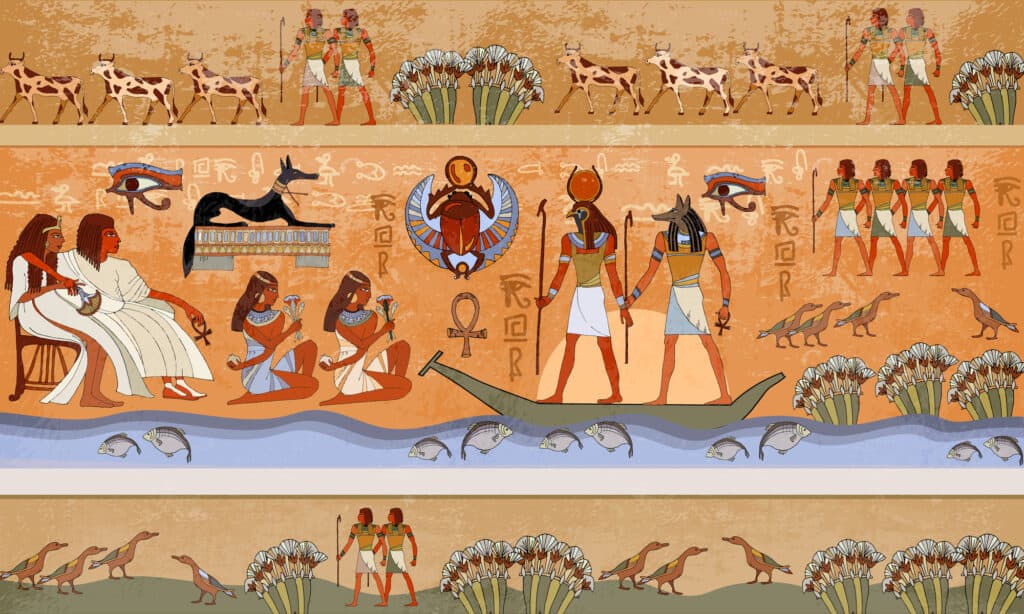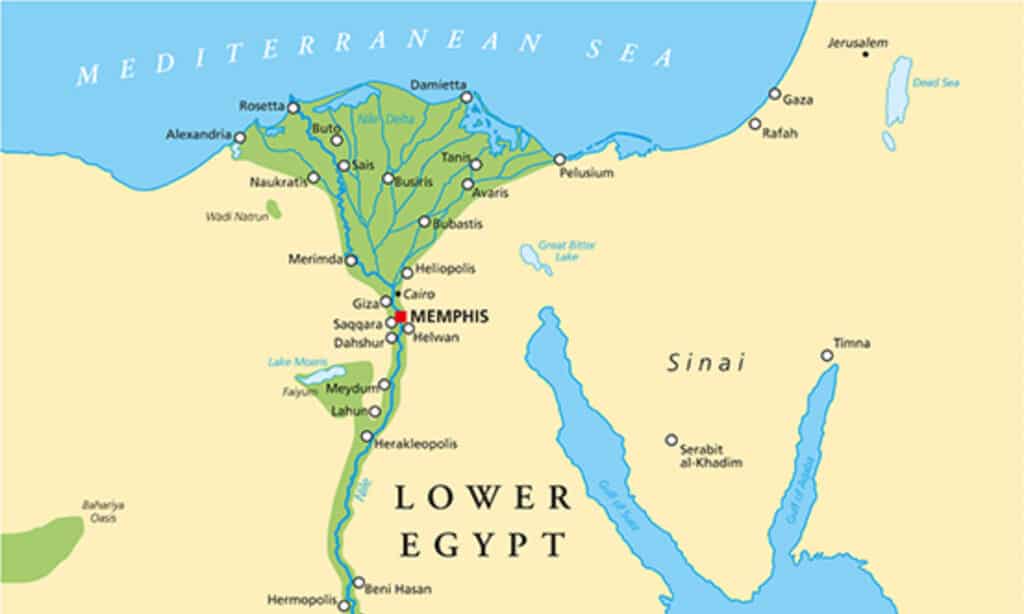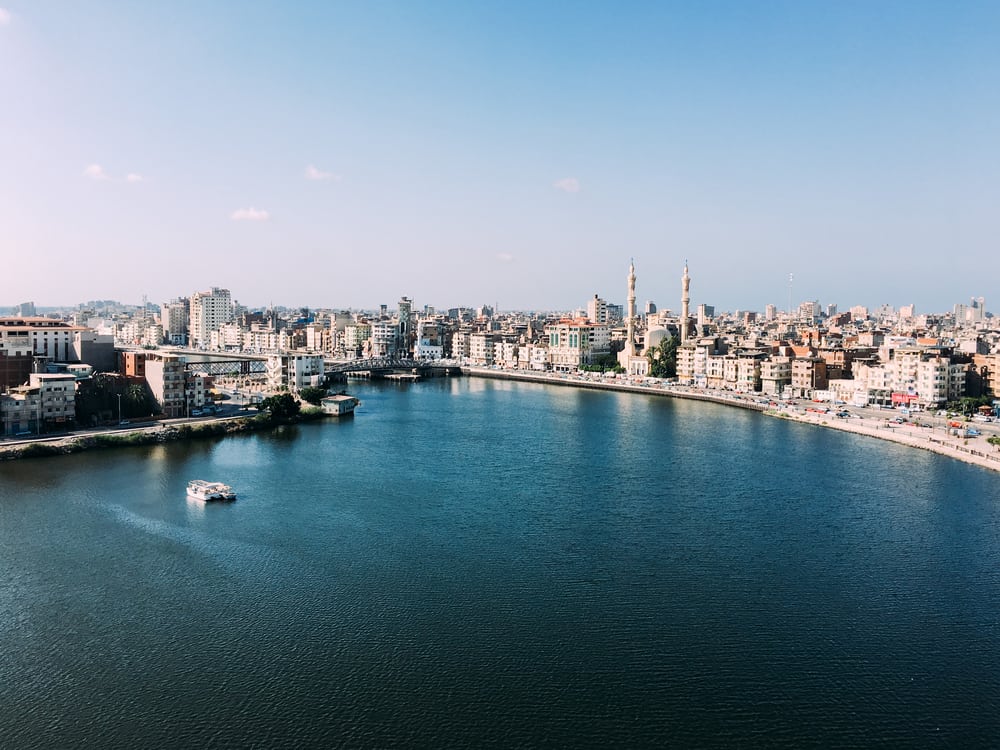
The Nile river was crucial to Egypt’s growth as a society and remains a central part of Egyptian society.
©matrioshka/Shutterstock.com
The ancient land of Egypt, located on the northern side of the African continent, is home to one of the world’s oldest civilizations. Egypt is considered the cradle of human civilization, with a rich history that goes as far back as the fourth millennia BCE. The River Nile is one major part of Egyptian history that contributed to the growth and flourishment of the ancient civilization. The river and two of its remaining distributaries count as the 3 major rivers in Egypt at the present time.
Egyptian society (both modern and ancient) owes much of its advancement to the Nile river. For thousands of years, this river served as a source of irrigation that helped transform the relatively dry area into a rich and lush land that could support agricultural activities. Today, the river remains a central part of Egyptian society. Up to 95% of Egyptians still live within a few kilometers of the Nile. This fact further alludes to the fact that the Nile is crucial to Egypt’s growth as a society as it serves as a source of water for irrigation as well as a vital route for transportation and trade.
How Many Rivers Are In Egypt?

The three major rivers in Egypt are the Nile and its two major distributaries, the Damietta River and the Rosetta River.
©Peter Hermes Furian/Shutterstock.com
The famous Nile River is the only major river that flows throughout the year in Egypt. The Nile River has no major permanent tributaries throughout its length as it flows through Egypt. However, there are distributaries in the Nile Delta as it flows into the Mediterranean. There are also some wadis (dry channels) that may carry some amount of water during the rainy season. Here are some things to know about the Nile River and its distributaries.
The Nile River
The ancient Nile is a major river not just in Egypt but also in the world. The Nile River is the longest river in the world. With an estimated length of about 4,258 miles, the river’s origin begins close to the equator, and it flows through eleven African countries, as highlighted below:
- Kenya
- Tanzania
- Uganda
- Rwanda
- Burundi
- DR Congo
- Ethiopia
- South Sudan
- Eritrea
- Republic of Sudan
- And, of course, Egypt
The Nile River is characterized by a slow current. It flows northwards, which is one of its most unique attributes since most rivers flow from North to South. The Nile is particularly important for Sudan and Egypt because it is the primary water source for these dry countries.
Agricultural Significance
In ancient times, the Nile River would flood its bank during the summer months every year. This flooding capability is the major reason the Nile is so significant for agriculture. The flooding Nile would deposit nutrient-rich soil and moisture into the land, making the crops grow and thrive. The area between the Nile River Delta and the Mediterranean Sea is also rich in nutrients due to the abundance of silt deposits left behind as the river flows into the sea. From as far out as space, one can see the stark contrast between the lush green river banks of the Nile and the barren desert in the rest of the region.
Modern Significance of the Nile
Today, the Egyptian people have built modern infrastructure around the Nile. Dams like the Aswân High Dam now help tame the river’s flooding and allow it to serve as a source of hydroelectric power for the country. But the Nile continues to play a significant role in the region’s agriculture and fishing. Canals also help to bring water from the Nile to farms for irrigation purposes. The Nile also serves as a crucial means of transportation in Egypt. Residents of Cairo now use water taxis, speed boats, and ferries to get by and avoid the busy roads of the rapidly growing City.
The Nile River Distributaries
The Nile River is the only major river that flows through Egypt. However, it divides into smaller distributaries in the Nile Delta, where it drains into the Mediterranean sea. In the past, the Nile had seven distributaries. These days, only two of these distributaries remain. The remaining 5 distributaries no longer exist due to silting and flood relief schemes. The 5 distributaries of the Nile River that no longer flow include:
- Pelusiac
- Tanitic
- Mendesian
- Sebennytic
- Bolbitinic
The two surviving rivers were called the Phatnitic River and the Canopic River in the past. Now, they have been renamed the Damyat or the Damietta River and Rashid or the Rosetta River.
Damyat or the Damietta River:

The Dumyāṭ River, or Damietta River, bisects the city of Damietta.
©SRStudio/Shutterstock.com
The Dumyāṭ River is found on the Mediterranean coast in the Lower Egypt area. This branch of the Nile bisects the city of Damietta. It flows into the Mediterranean Sea about 8 miles northeast of the City. Although it isn’t exactly a major river, this distributary supports fishing and agricultural activities in this region. A canal (The Al-Salaam Canal) was commissioned in 1979 as part of efforts to bring water from this distributary to the Suez Canal and Sinai area.
Rashid or the Rosetta River

A sunrise view for a canal coming from the river nile passing through fields of farm lands.
©Kazzazm/Shutterstock.com
The second branch of the Nile River is known as the Rashid or Rosetta River. In addition to supporting rice cultivation in the delta, this river is also known for its close association with the port city of Rosetta. The City is located in the Nile Delta. Rosetta has a virtual monopoly on the production of delta-grown rice in the region thanks to this arm of the Nile River.
The Nile’s Wadis
In Egypt, the Nile River is not fed by any major tributary. Further upriver before flowing into Egypt, two major branches combine to form the Single stream that flows through Egypt. These are the Blue Nile, which originates from Lake Tena in Ethiopia, and the White Nile, which originates from the Great Lake region of East and Central Africa.
In the Eastern Desert Within the Egyptian region, several dry tributaries (also known as wadis) connect with the Nile. The purpose of these wadis is to drain runoff from the mountains along the Egyptian coast. This means they only fill with water when it rains, and the runoff in many of these wadis doesn’t even reach the Nile’s main stream at the end of the day. The 3 major wadis in Egypt include:
- The Wadi Abbad, which drains an area of about 2,700 square miles
- The Wadi Shait, which drains an area of about 3,861 square miles
- The Wadi El-Kharit, which drains an area of about 8,880 square miles and flows over a length of about 162 miles.
Conclusion
The Nile River is the major river in Egypt. It played a critical role in the development of ancient Egypt, and it is still as relevant today. The Nile does not have any major tributaries. However, there are wadis that drain the surrounding regions as well as distributaries in the Nile Delta.
Up Next
10 Famous Rivers You Need to Know – Like the Nile, there are many more spectacular rivers. These are 10 of the most famous ones.
Why Do Rivers Flow South? (Discover 5 Rivers that Break the “Rule”) – Most rivers flow south, but the Nile and a few others break the convention. Discover the reason rivers flow the way they do.
Egypt – Learn about the ancient land of Egypt in all its glory and splendor.
The photo featured at the top of this post is © iStock.com/Givaga
Thank you for reading! Have some feedback for us? Contact the AZ Animals editorial team.






